
Global Warming and Population Growth, create a need for more Water.
There are a number of different ways to address a shortage of water:
-
Get equal value from less water (Conservation)
-
Find more water from surface and groundwater sources
-
Have more precipitation (Increase the velocity of water)
In this article, we discuss “Finding More Water by Using Cloud Seeding to Increase Precipitation”.
Last Saturday we published an article based on a talk by Dr. Bruce M. Thomson, Regents Professor of Civil Engineering at the University of New Mexico. He gave a very good presentation on obtaining more water from brackish water, oilfield water, and importing water. You can access that article HERE.
Let us get started with today’s article on using cloud seeding to increase precipitation.
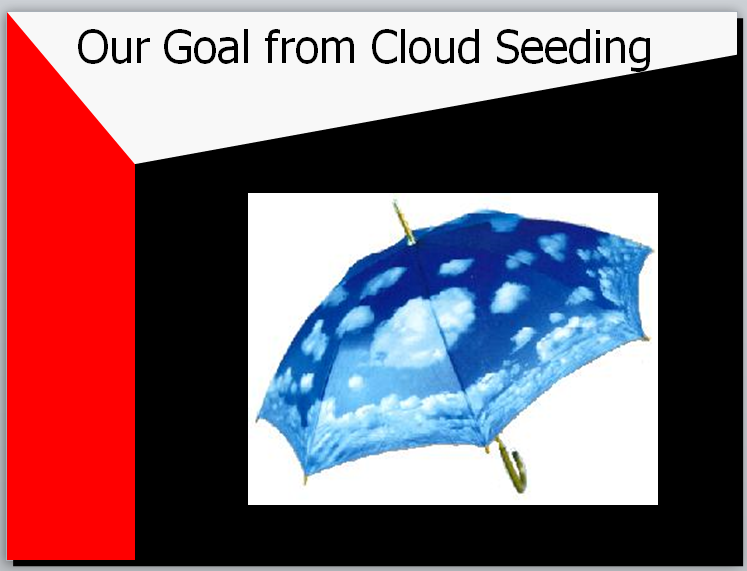
| Weather modification with cloud seeding was discovered by General Electric at the Schenectady New York Laboratory. Initially, on July 14, 1946, they used Dry Ice. Of course, prior to that time, there were other attempts at increasing precipitation |
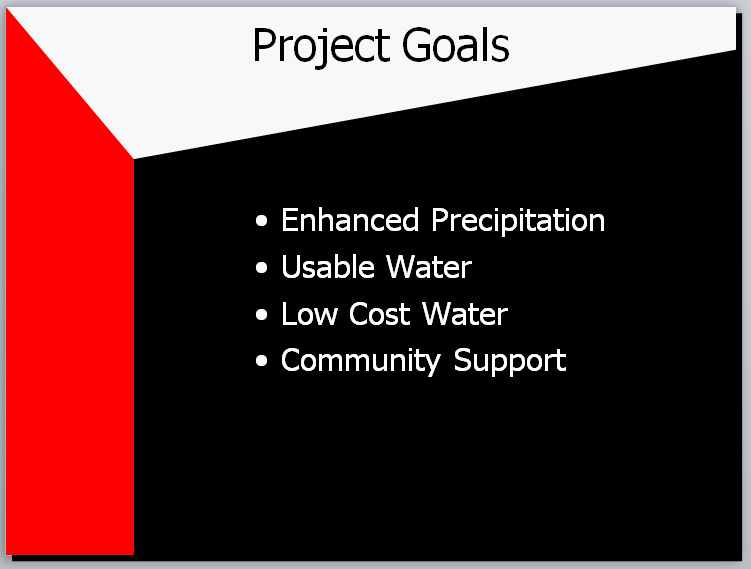
| Cloud seeding can be used for three different purposes: Precipitation enhancement, Hail suppression and fog dispersal. In this article, I am focusing on precipitation enhancement. |
Some will need to click on “Read More” to access the full article.
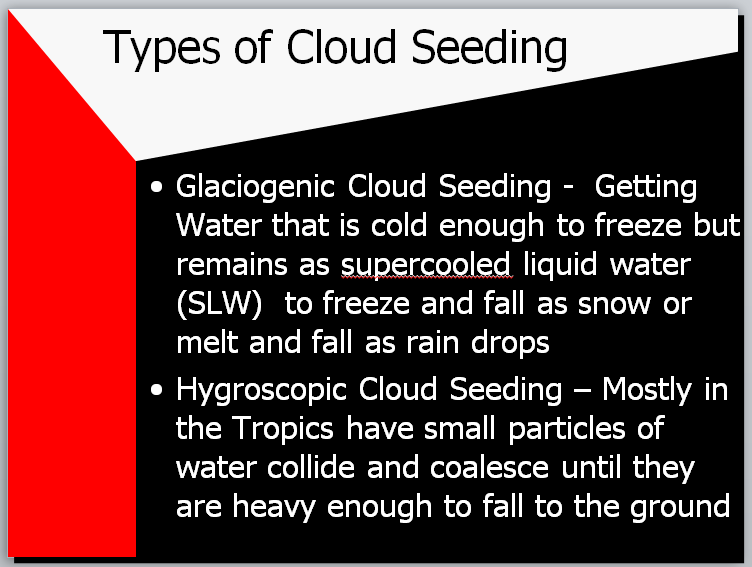
| In this article, I am talking about only Glaciogenic cloud seeding which can be winter/mountain-based or summer/Great Plains-based. |
Many states are active with cloud seeding projects. It has lagged in New Mexico even though the initial interest in the West began in New Mexico. But the effort got a boost in the period below when the U.S. Bureau of Reclamation funded a research project (Skywater LINK) in I believe three states, one of which was New Mexico.
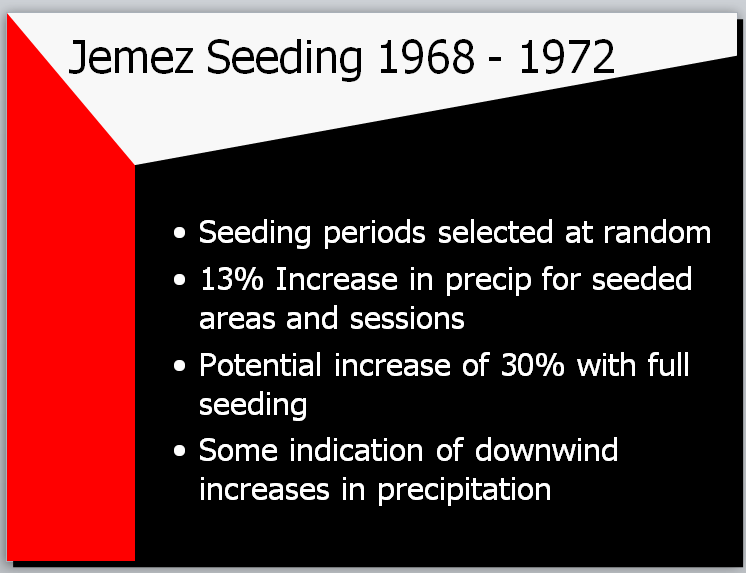
| The above is a short summary of the results of that research project for the part that was conducted in New Mexico. |
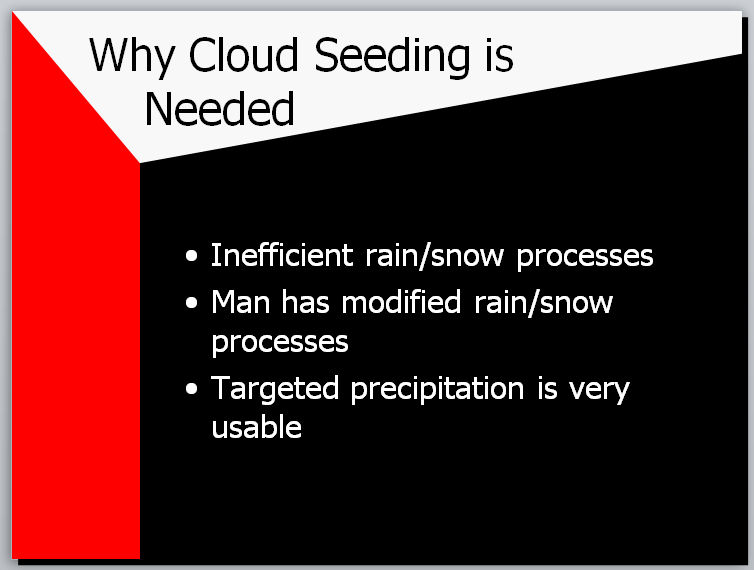
| Global warming has changed the pattern of precipitation less in some places and more in other places. Higher temperatures result in more evaporative losses and plants generally grow faster when it is warmer and carbon dioxide levels are higher. So many places need more water. |
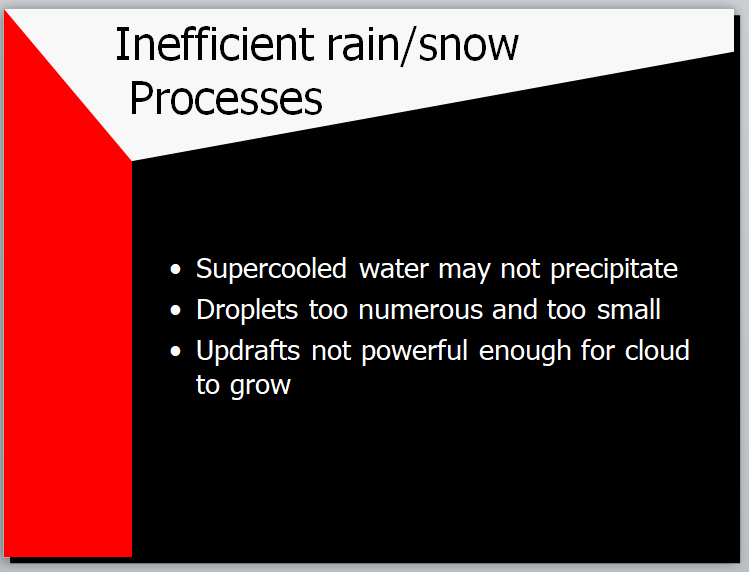
| In the atmosphere, water does not always freeze at 32F and 0C. In some air masses, there are many small droplets that are not heavy enough to fall to the ground. For summer clouds the updrafts may not be strong enough for the cloud to grow. |
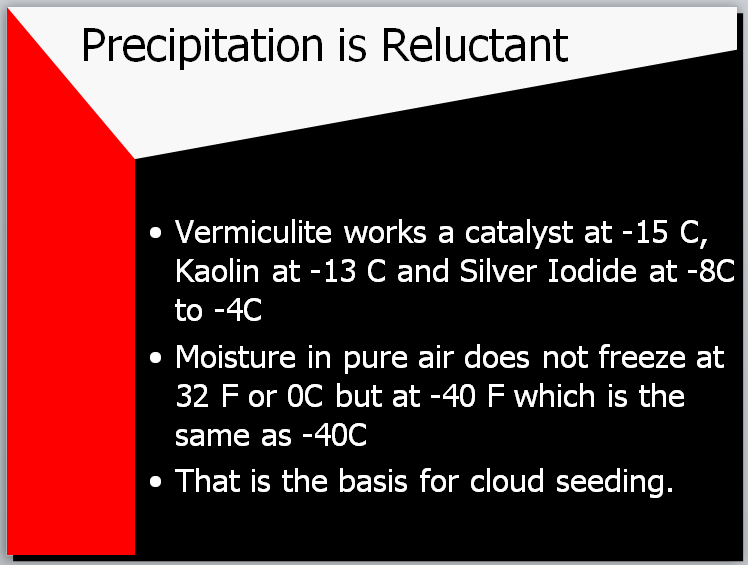
| The simplest way to look at glaciogenic cloud seeding is that it helps water freeze into snowflakes which can land as snow or melt on the way down. |
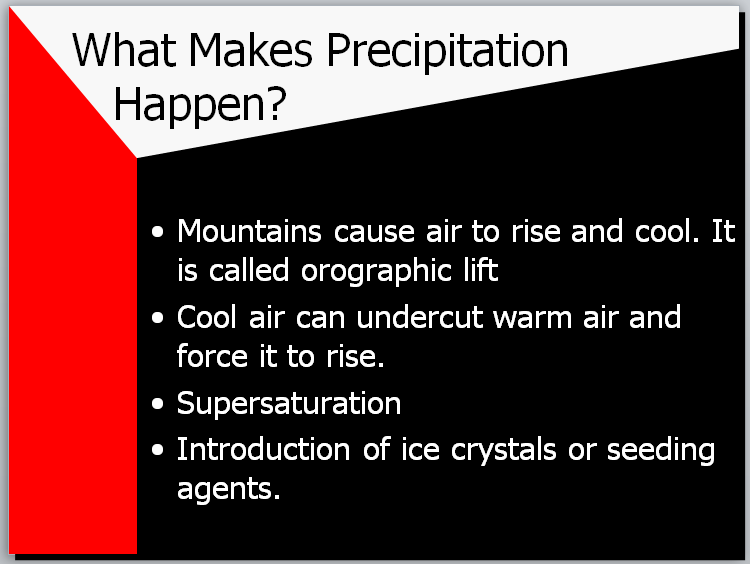
| The general idea is for nature to move moisture-bearing airmasses higher, cool and then assist them in glaciation. |
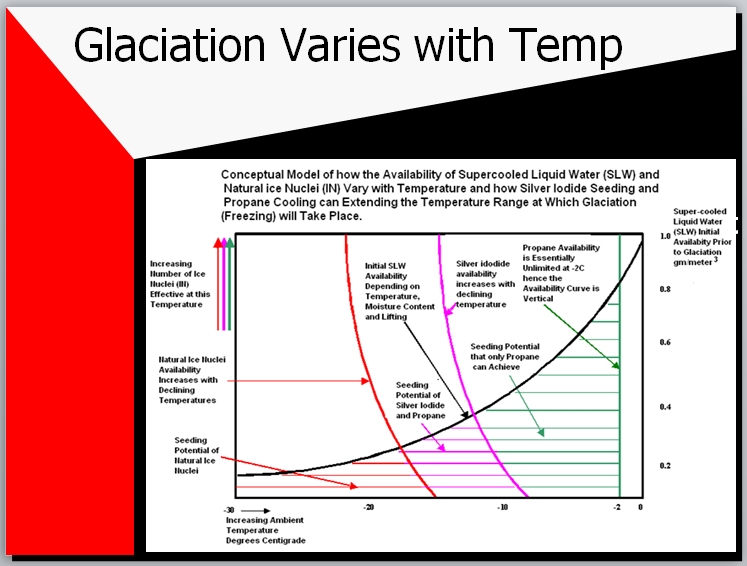
| I worked with Dr. James Heimbach Jr. (now deceased) to create this graphic which shows that colder temperatures activate particles that participate in glaciating moisture. So not only do mountains force air masses to rise and cool but that process also activates particles that serve as ice nuclei. |

| You need moisture-rich clouds and for many reasons, you can only seed small areas so the impact of cloud seeding which is nominally a 10% increase in precipitation, impacts only a limited part of the weather patterns that produce rain and snow. |
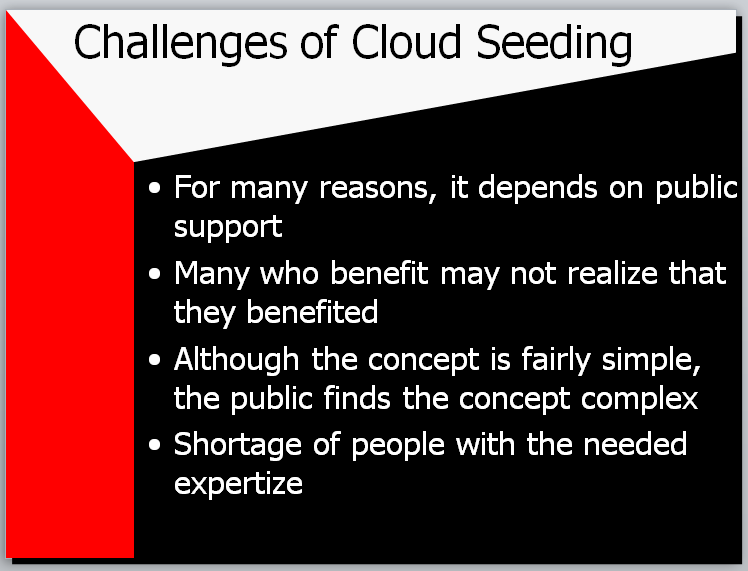
| The second bullet point is very important. If you seed the Rocky Mountains and someone downstream who is dependent on Colorado River water has more water due to the cloud seeding in the Rocky Mountains, they may not realize that the cloud seeding provided them with more water. |
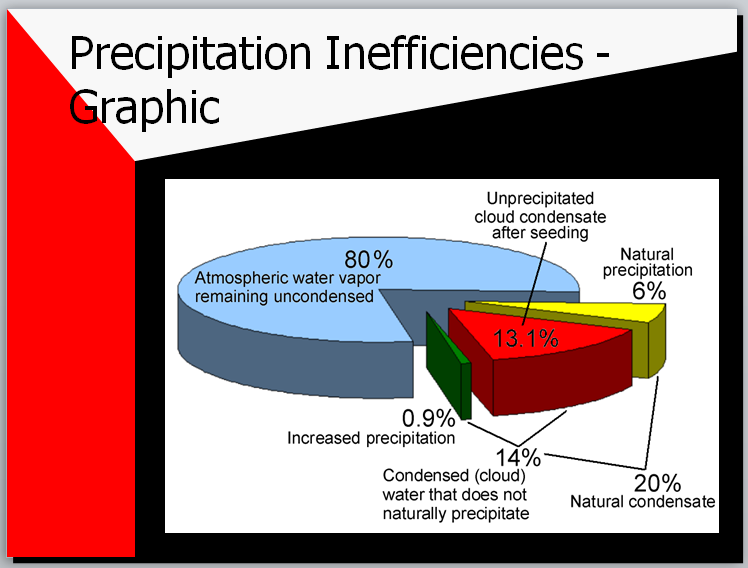
| We cover this more in the next slide and I do not have a reference to the size of the sections of the pie but most moisture just transits states. Some part forms clouds and some of the moisture in the clouds precipitates and actually reaches the ground. |
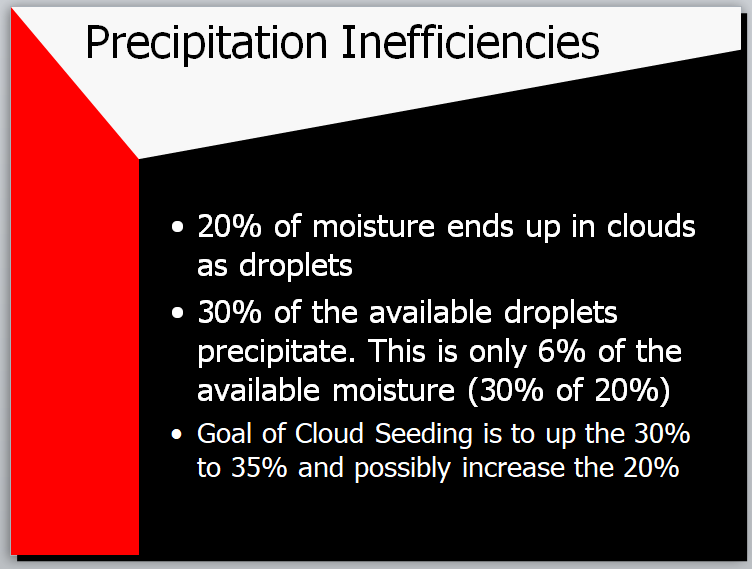
| I had a reference for this data as it applied to Colorado but I can not find it so considered it to be representative. The point is that only a small percentage of the moisture in the atmosphere falls as snow or rain. If that percentage can be increased just a bit it creates a lot of water. |

| This graphic is a modification of the work of B. Hove of the North Dakota State Water Commission. I modified it to represent the situation in New Mexico. The solid number is the 100 million acre-feet of precipitation in an average year. Some of that water recharges aquifers. About 2,000,000 acre-feet enters the water supply. Some water evaporates or sustains plant life (transpiration) in remote areas. What is important is that other than aquifer recharge, all water quickly returns to the atmosphere. I call this the hydrologic circle. As explained earlier, the best information I have calculated, which should be considered a guess since I can not find the study that determined this is that to have 100 millon acre-feet of precipitation you probably need about 300 MM af of water in clouds and that might mean that 1.5 to 2 Billion acre-feet of moisture passes over New Mexico. The speed at which this happens I call the velocity of water much like the concept in the monetary system of the U.S. So I see cloud seeding as a way to increase the velocity of water and have more uses of each molecule of water in a year.
Water is almost impossible to destroy so using it in one place does not reduce the amount of water available to the east. |
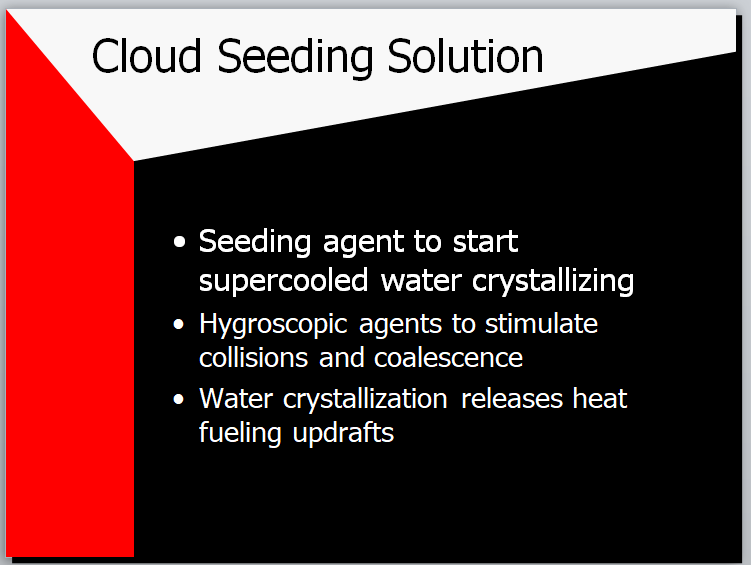
| We do mostly glaciogenic seeding in the U.S. mostly with silver iodide and sometimes with dry ice. But often a hygroscopic agent is added just in case there is some tropic air mixed in. The stimulation of updrafts occurs with all clouds but is more significant for summer clouds and it extends the life of the cloud. |
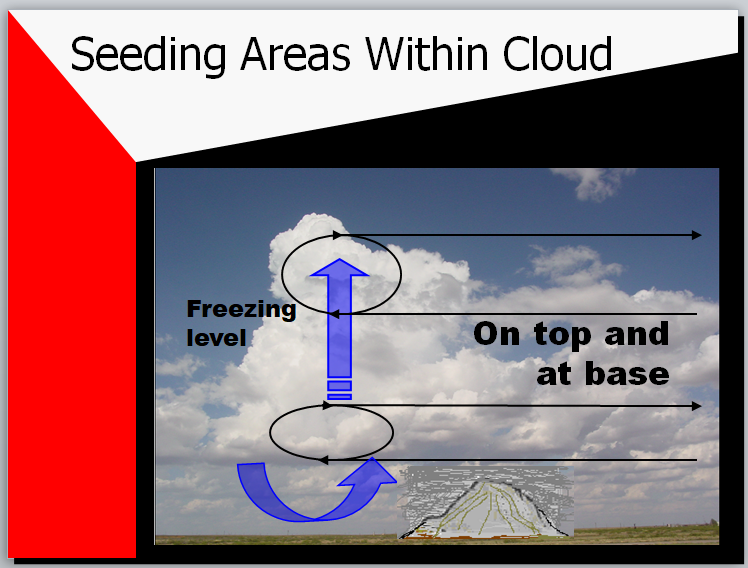
| This is mostly about summer seeding on the Great Plains with aircraft. These types of clouds when precipitation is stimulated can actually grow in size since freezing releases heat (how many remember High School Chemistry? |
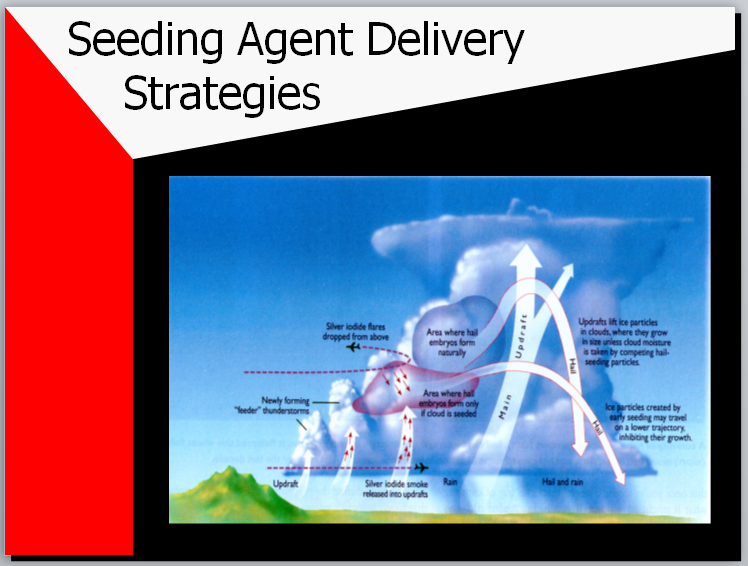
| A more elaborate explanation of summer clouds and seeding with aircraft |
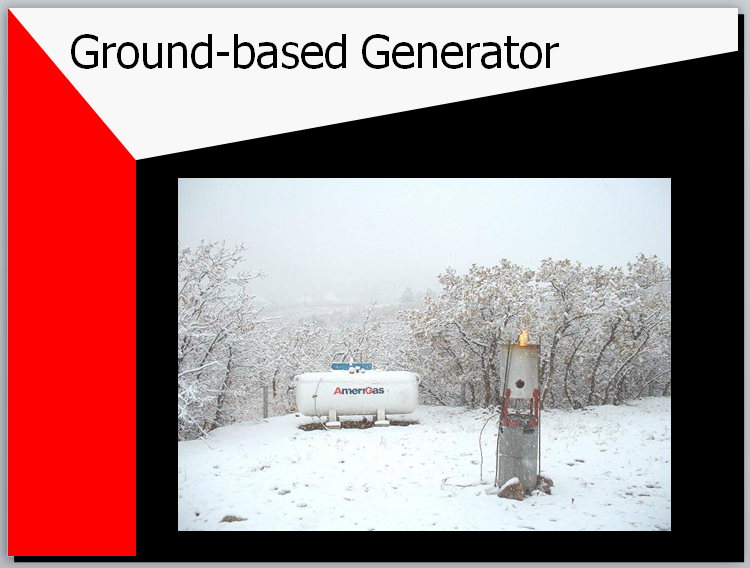
| For winter seeding which is more common, the silver iodide is burned in acetone to form smoke which rises to meet the SLW in clouds. It is a very small amount of silver iodide because of Avagadro’s Number. (Avogadro’s number is the number of particles in 1 mole of a substance). It is a large number. The goal is to have the ground-based generator create that number of silver Iodide particles so the quality of the ground-based generator is important. Also, it is better to have remote-controlled ground-based generators than manually operated ground-based generators. There are many considerations which determine the level of success of a project. |
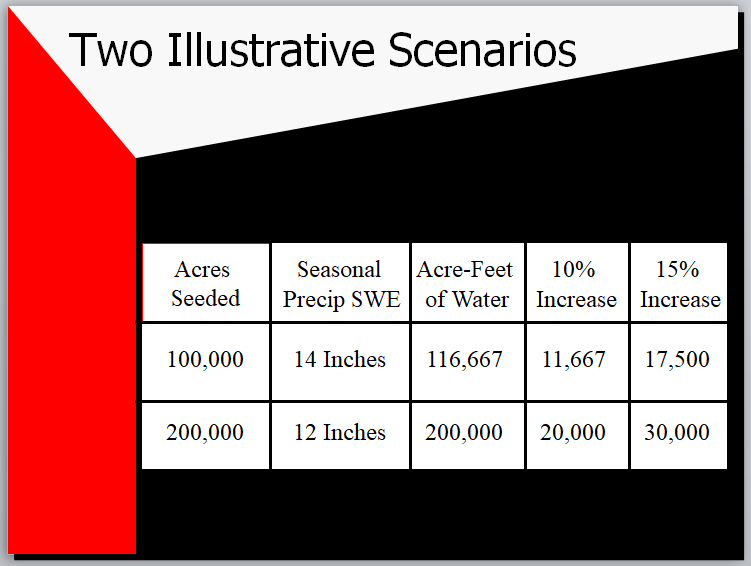
| New Mexico has about a 2,000,000 acre feet water budget. The above are two potential projects. New Mexico is pretty arid but cloud seeding is done in the mountains so there is more than average precipitation at elevation during the winter seeding. The second example is for an area of about 10 miles wide and 20 miles long. The result would be perhaps an additional 30,000 acre-feet of water which is small compared to 2,000,000 but still a significant amount of water.
30,000 acre-feet of water is enough water for 120,000 families or perhaps a bit more. It is also enough for close to 15,000 acres of farm land. |
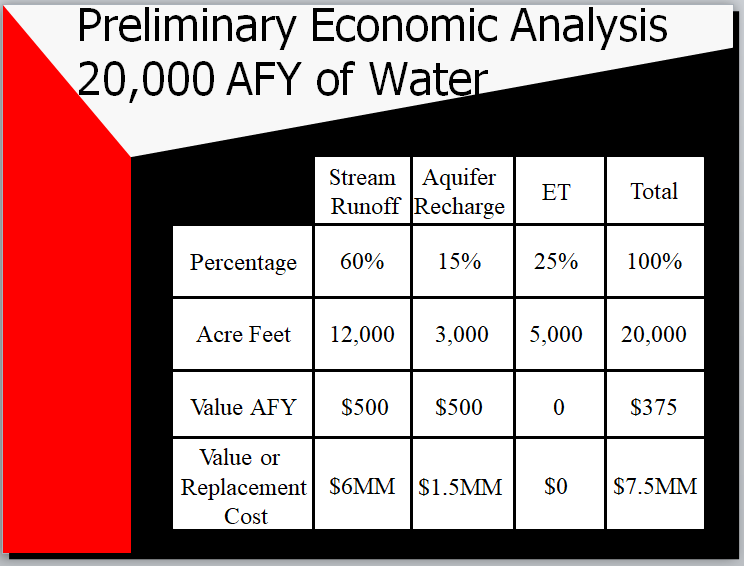
| The above does not show the cost but the value is enough for a very high ROI |
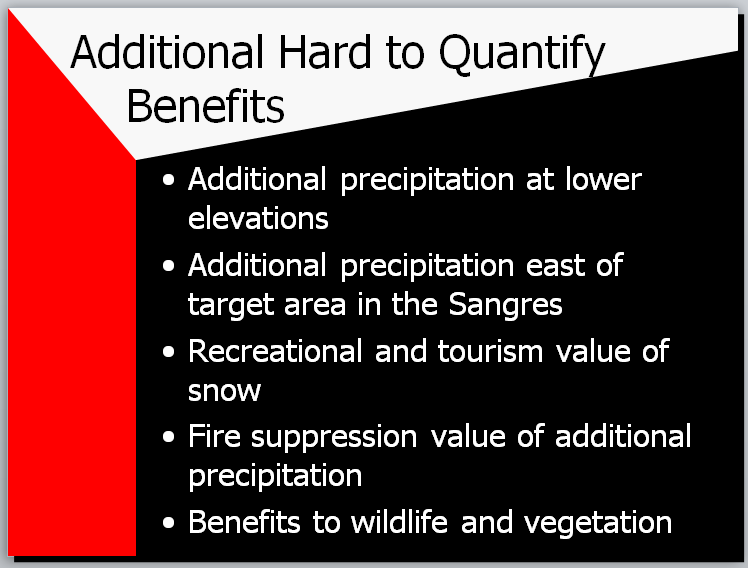
| The above is specific to a particular proposed project. The primary goal of most cloud seeding projects is to generate additional stream flow. But there are many other benefits of more precipitation. |

| Here we are discussing the effectiveness of cloud seeding. The most used method is called target and control. The target area is where the seeding would take place. The control area is an area where historically there is a predictable ratio of precipitation (mostly snow in one area as compared to the target area.
You seed the target area. The actual snow in the control area lets you calculate how much snow (water equivalent) you would expect in the target area. The difference between the actual and the calculated if positive is the benefit of cloud seeding. If negative it is a negative impact of cloud seeding. One can do the same with a target stream and a control stream. |
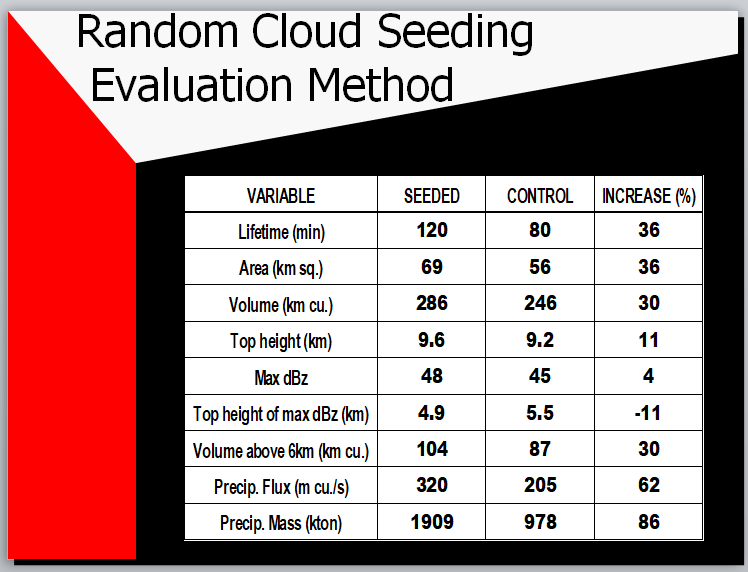
| This is a summer seeding assessment. In theory, they pick two identical clouds and flip a coin to see which one they seed. With radar and software, they are able to estimate the parameters shown. Of most interest is the precipitation flux which is how much moisture left the cloud. It may not all have reached the ground. Unlike winter seeding which has modest but important increases in snow, summer seeding for the ideal clouds produces a large increase in precipitation. The problem is getting to the ideal clouds in time. Also of interest is the seed summer clouds last longer. |

| The map is courtesy of the NAWMC. There was summer seeding in New Mexico last summer but it is not a regular program so they did not add it to the map. But I have heard that it will be added. There are a lot of cloud seeding projects. I expect the number of projects will slowly increase but the conditions that make for a successful cloud seeding project do not exist everywhere. |
Additional Reading
Weather Modification Association LINK
North American Weather Modification Association LINK
ASCE EWRI Weather Modification Standards and Guidance Manuals LINK
| I hope you found this article interesting and useful. |